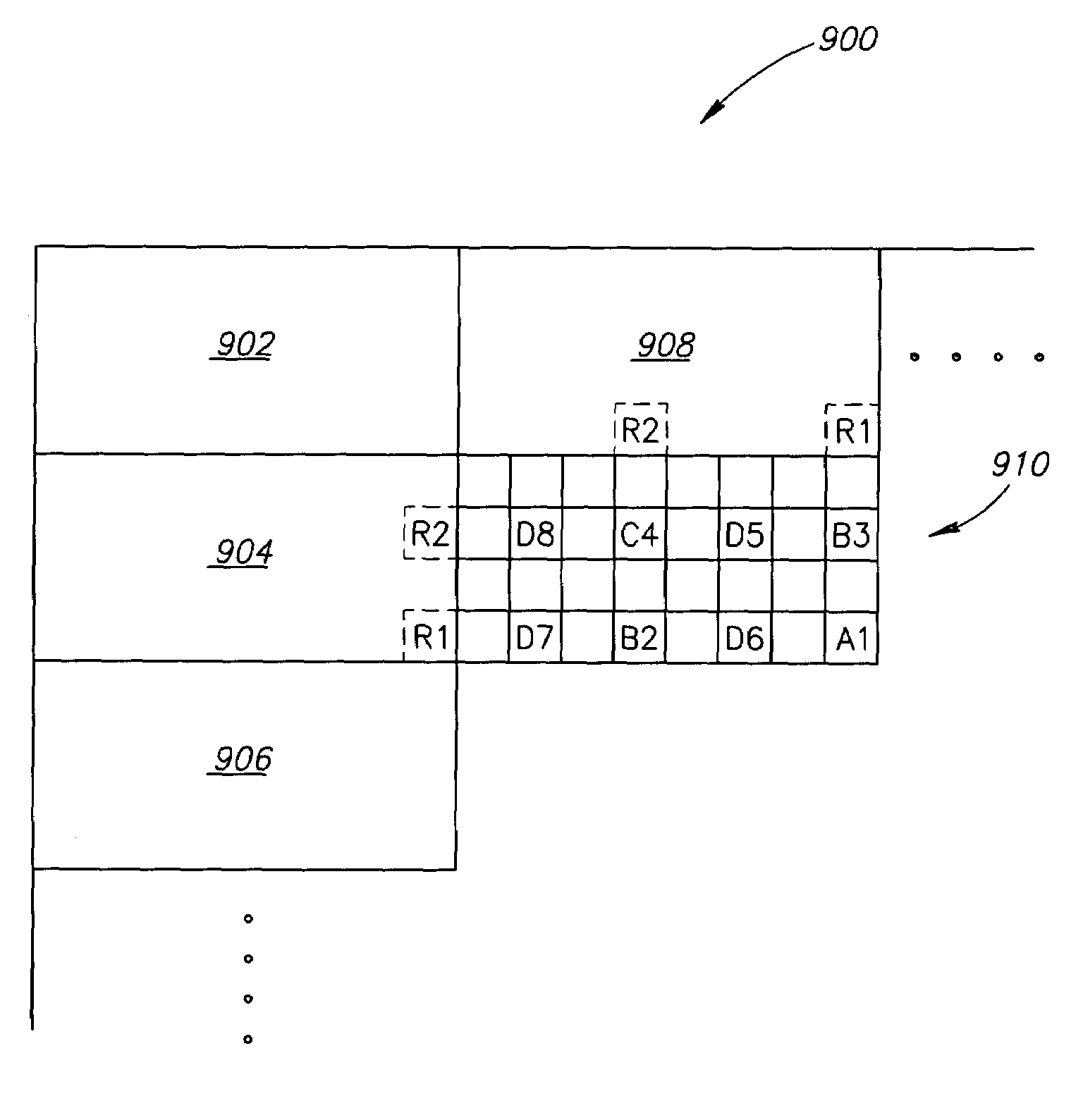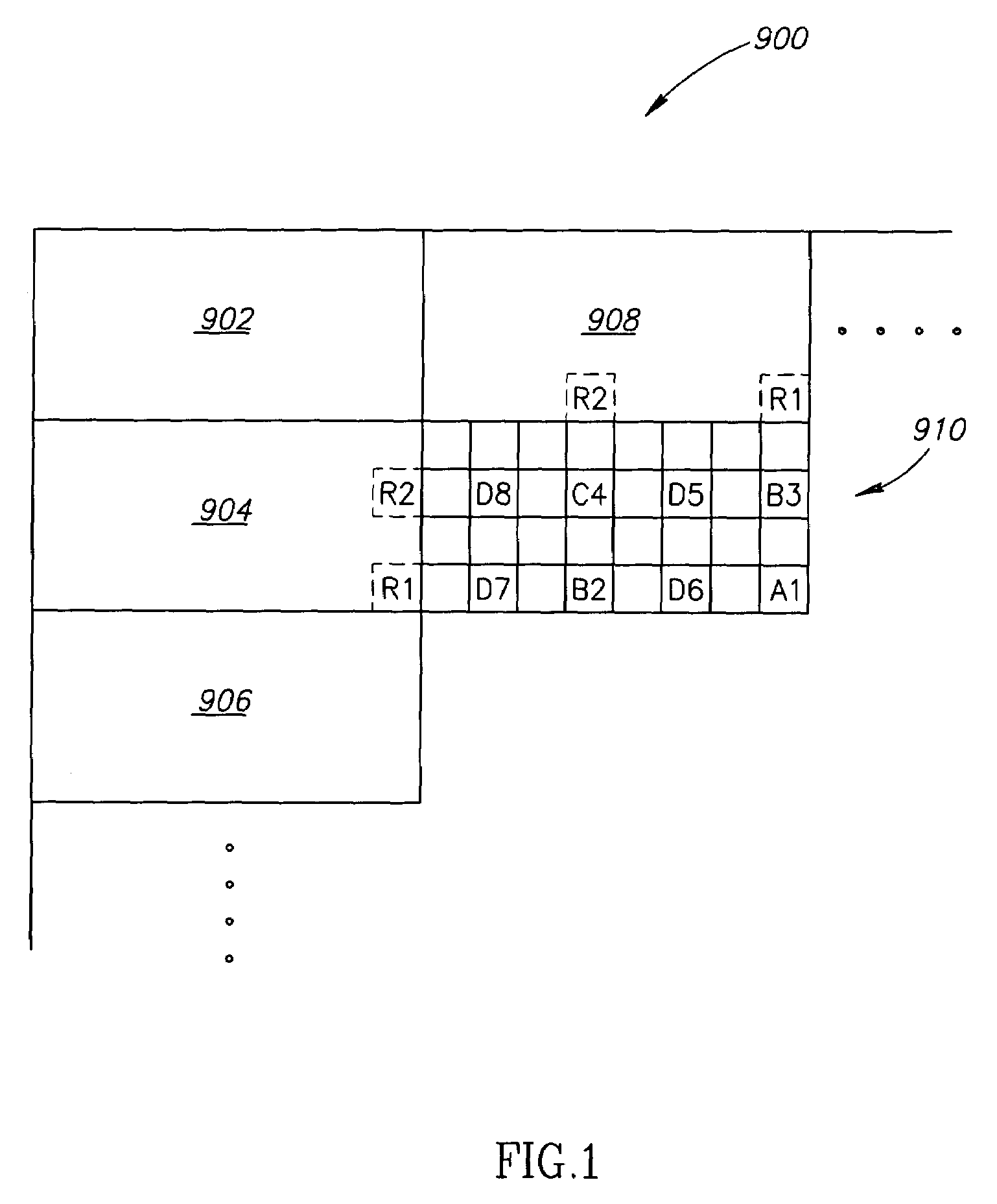Interpolation image compression
a compression and image technology, applied in the field of compression of images, can solve the problems of degrading image quality and/or reducing the efficiency of compression, and achieve the effects of improving compression quality, reducing compression efficiency, and facilitating compression implementation
- Summary
- Abstract
- Description
- Claims
- Application Information
AI Technical Summary
Benefits of technology
Problems solved by technology
Method used
Image
Examples
Embodiment Construction
[0119]FIG. 1 is a schematic illustration of an order of compression of pixels of an image 900, in accordance with an exemplary embodiment of the invention. FIG. 2 is a flowchart of acts performed in compressing an image, in accordance with an exemplary embodiment of the invention.
[0120]The image is divided (200) into a plurality of equal size blocks (e.g., 4×8 pixel blocks). In FIG. 1, for simplicity, only blocks 902, 904, 906, 908 and 910 are shown. The left end and / or top edge blocks (e.g., 902, 904, 906 and 908) are encoded using any method known in the art. In an exemplary embodiment of the invention, the left end and top edge blocks are encoded using the method used for the other blocks using a virtual frame of the image in calculating the prediction values. The virtual frame is optionally given zero values, same values as their neighboring pixels or any other values used in the art for virtual values.
[0121]For each non-edge block (e.g., block 910), the lowest right pixel (mark...
PUM
 Login to View More
Login to View More Abstract
Description
Claims
Application Information
 Login to View More
Login to View More - R&D
- Intellectual Property
- Life Sciences
- Materials
- Tech Scout
- Unparalleled Data Quality
- Higher Quality Content
- 60% Fewer Hallucinations
Browse by: Latest US Patents, China's latest patents, Technical Efficacy Thesaurus, Application Domain, Technology Topic, Popular Technical Reports.
© 2025 PatSnap. All rights reserved.Legal|Privacy policy|Modern Slavery Act Transparency Statement|Sitemap|About US| Contact US: help@patsnap.com



